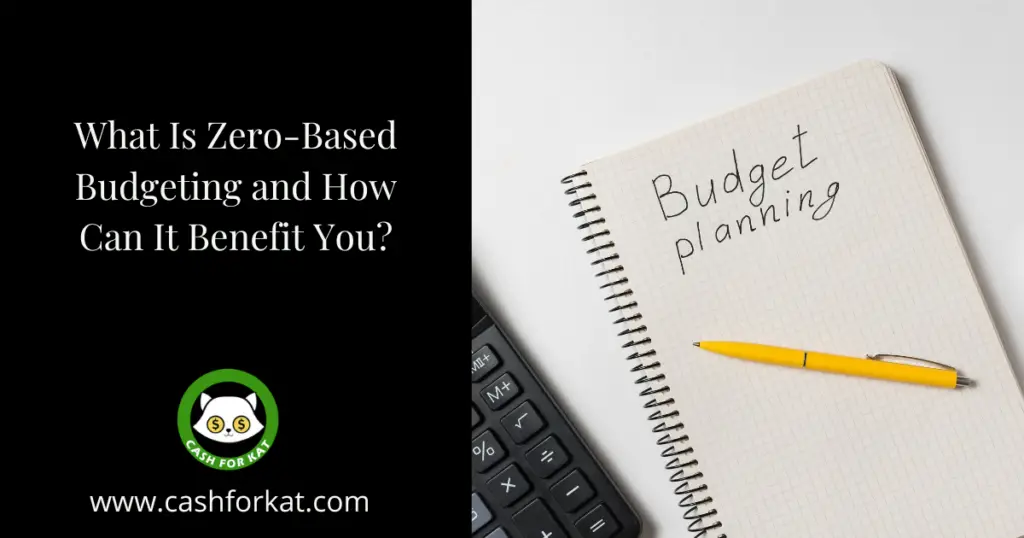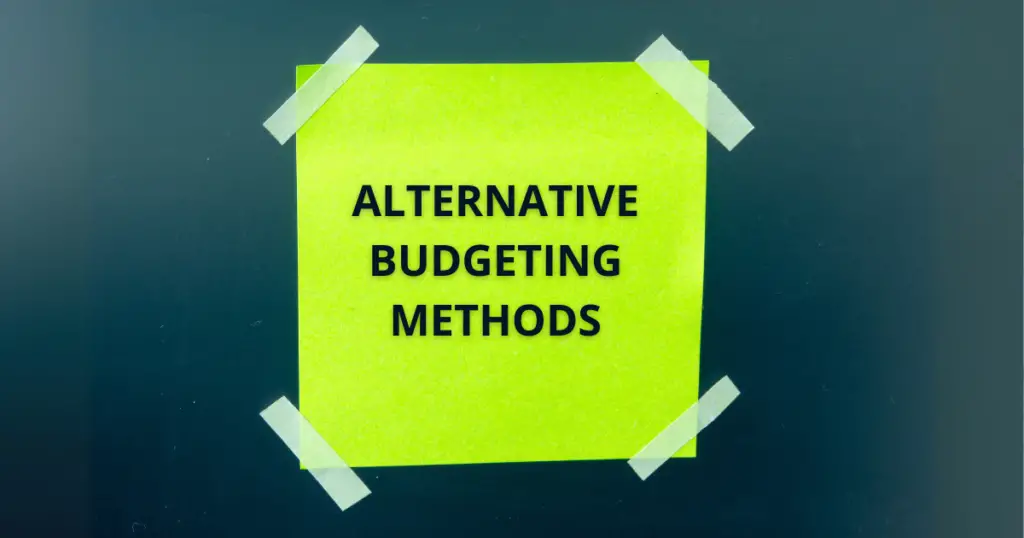
Zero-Based Budgeting (ZBB) is creating quite a buzz in financial circles, especially among small business owners and finance enthusiasts. But what exactly is ZBB, and why are so many businesses adopting this innovative approach to money management?
If you’re a small business owner looking for a fresh take on budgeting or a finance enthusiast seeking clarity on financial control methods, this post is for you. We’ll explore what ZBB is, how it differs from traditional budgeting, and, most importantly, how it can benefit your business. By the end, you’ll understand its advantages and practical steps to implement ZBB effectively.
Table of Contents
- What Is Zero-Based Budgeting?
- What Are the Benefits of Zero-Based Budgeting?
- Challenges and Limitations of Zero-Based Budgeting
- Key Steps to Zero-Based Budgeting
- What are the Best Tools to Use for Zero-Based Budgeting?
- Best Alternatives to Zero-Based Budgeting
- Final Thoughts
What Is Zero-Based Budgeting?
Zero-Based Budgeting (ZBB) is a strategic budgeting approach that requires organizations to justify all expenses from scratch for each budgeting cycle. Unlike traditional budgeting, which adjusts previous or past spending levels, ZBB forces a fresh evaluation of every expense. It ensures that all spending aligns with current goals and priorities.
Developed in the 1970s by Peter Pyhrr, an accounting manager, ZBB was quickly adopted in industries like manufacturing and procurement, where optimizing resources is crucial.
How Does Zero-Based Budgeting Work?
Instead of assuming past spending is the best guide for the future, ZBB requires individuals, departments, or businesses to break down their expenses, evaluating what is truly necessary. If an expense doesn’t add value (isn’t fully justified), it is either reduced, reallocated, or entirely removed. The goal is to keep budgets lean, strategic, and focused on business priorities.
What Are the Benefits of Zero-Based Budgeting?

Now that we’ve defined ZBB and covered how it works, let’s dive into the key benefits and why it can be a game-changer for your organization.
Cost reduction
ZBB encourages a more thoughtful approach to spending by requiring justification for every expense. This process helps businesses to identify and eliminate unnecessary costs, optimize fixed expenses like rent and utilities, and ensure financial resources are used efficiently.
Improved resource allocation
By evaluating the necessity and impact of each expenditure, ZBB ensures funds are directed toward projects and activities that align with the business’s strategic goals. This enhances the effectiveness of spending and ensures resources are allocated where they create the most value.
Overall budgeting agility
Because ZBB starts from scratch for each budgeting cycle, organizations can adapt more quickly to economic shifts and evolving business needs. This agility is especially valuable during periods of economic instability and uncertainty. For instance, it allows finance teams to make data-driven adjustments.
Enhanced operational efficiency
By eliminating redundant or low-value expenses, ZBB shifts the focus to activities that drive growth and efficiency. This approach ensures that every dollar spent contributes to the organization’s success, leading to more streamlined and efficient operations.
Challenges and Limitations of Zero-Based Budgeting

While there are numerous benefits, Zero-Based Budgeting (ZBB) comes with certain challenges and limitations that you should understand before implementing it.
Time and resource intensity
ZBB requires departments to justify all expenses from scratch, which can be time-consuming and labor-intensive, particularly for larger organizations. Additionally, while ZBB enhances cost control, it requires extensive departmental collaboration across the organization.
Difficulties in long-term planning
ZBB only focuses on justifying expenses for the upcoming budget period, which can make long-term financial planning challenging. For instance, unexpected changes in strategy or economic conditions may require the allocation of additional funds, but strict cost justification can limit flexibility in addressing these shifts based on current trends.
Prioritizes tangible outputs
ZBB tends to prioritize expenses with quantifiable returns, which can result in reduced funding for crucial but intangible activities like employee training and brand building. While these areas are harder to quantify, they play a crucial role in long-term growth and innovation.
Key Steps to Zero-Based Budgeting

Below is a step-by-step guide to implementing ZBB, ensuring you have a clear roadmap for adoption.
Preparation Phase
The first step in the zero-based budgeting process is the preparation phase. This involves defining your objectives (e.g., what you hope to achieve during this budget period), and determining the resources needed to make this possible. Identifying key stakeholders is also crucial, as each department will be required to justify its expenses. Additionally, gathering the necessary data to assemble your budget ensures a comprehensive financial plan. It is also important to classify expenses as either essential expenses, strategic funds, supportive funds, or discretionary funds.
Implementation Phase
Next, you can begin implementing zero-based budgeting, which includes training your stakeholders on the process, explaining how and why expenses require justification, and then finally, creating a new budget from the ground up. As part of this process, allocate resources—assign funds to each expense category and justify the benefits, costs, risks, and alternatives for each line item. Clear communication is crucial during this phase to ensure that all stakeholders understand the benefits and rationale behind ZBB. Effective change management can facilitate smoother adoption and reduce resistance, making the transition more seamless.
Review and Adjustment Phase
Every effective budget has an adjustment phase, where the finance team reviews how resources have been allocated and ensures they remain aligned with organizational goals and responsive to changes. Regular reviews help identify discrepancies, assess financial performance, and make necessary adjustments to optimize resource allocation and maintain financial health.
As part of this process, monitor your budget, compare your actual results against your plan, and report on the results to your stakeholders.
What are the Best Tools to Use for Zero-Based Budgeting?

Zero-based budgeting (ZBB) requires the right tools to streamline planning, tracking, and analysis. Here are some of the best options:
- Spreadsheets: Applications like Microsoft Excel and Google Sheets offer flexibility for organizing budget data, performing calculations, and generating reports. They are customizable and cost-effective options for smaller organizations.
- Financial Planning & Analysis (FP&A) Software: These tools specialize in budgeting, financial analysis, forecasting, and budgeting. They provide a centralized platform for data integration, scenario modeling, and collaboration. Additionally, these tools feature advanced analytics capabilities to allow for data-driven decision-making.
- Enterprise Resource Planning (ERP) Systems: They integrate financial processes, such as reporting, tracking, and budgeting. These systems enhance collaboration across departments, facilitate data integration, and offer a comprehensive financial view.
- Budgeting & Planning Software: Designed to simplify the budgeting process, these tools offer features such as user-friendly interfaces, workflow automation, templates, scenario modeling, team collaboration support, and reporting.
Best Alternatives to Zero-Based Budgeting

Zero-based budgeting (ZBB) is just one approach to financial planning. Depending on your organization’s needs, alternative budgeting methods may offer a better fit. Here is how ZBB compares to some of its best alternatives:
Zbb vs. Activity-Based Budgeting
Activity-based budgeting calculates the funds required to achieve a specific goal, focusing on strategic alignment and expected outputs. In contrast, ZBB emphasizes justifying each department’s expenses from the ground up, ensuring cost precision and adaptability to unexpected financial changes or shifts.
Zbb vs. Incremental Budgeting
Incremental budgeting adjusts the current year’s budget by adding or subtracting a percentage based on prior spending. ZBB, on the other hand, disregards past budgets entirely and requires a fresh evaluation of all expenses, leading to more stringent cost control.
Zbb vs. Continuous Budgeting
Continuous budgeting extends the budget by one month at a time, allowing for ongoing adjustments based on real-time financial performance. While ZBB provides a comprehensive annual budget upfront, continuous budgeting offers more flexibility to refine financial plans throughout the year.
Zbb vs. Value-Proposition Budgeting
Value proposition budgeting ensures every expense provides clear value by questioning its purpose and impact on customers, employees, or stakeholders. Like ZBB, it aims to eliminate wasteful spending. However, value proposition budgeting places greater emphasis on justifying expenditures based on their overall return on investment.
Final Thoughts
Zero-Based Budgeting is a powerful tool for maximizing financial efficiency, eliminating waste, and aligning spending with strategic goals. While it requires effort and discipline, the long-term benefits far outweigh the challenges.
By implementing ZBB, businesses can gain better financial control, improve accountability, and create a more agile, cost-effective operation. ZBB also works well for personal finance, and it could serve as a great way to help reduce your monthly expenses. Consider exploring financial tools like YNAB to help you stay on track of your finances.
Are you ready to take control of your business finances with Zero-Based Budgeting? Let us know your thoughts in the comments below!


